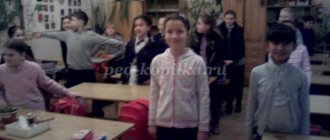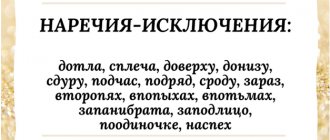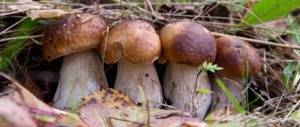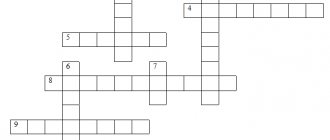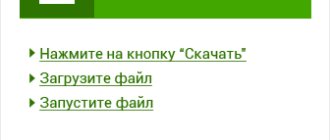Lesson-research in biology grade 8 on the topic: “Posture. Warning for flat feet"
Lesson-research on the topic:
Posture. Warning for flat feet.
Item:
Biology
Class:
8
Lesson type
: lesson-research
Target
: create conditions for students to effectively acquire knowledge about posture and the prevention of flat feet.
Lesson objectives:
give the concepts of “posture”, “flat feet”, introduce methods of self-control and correction of posture, arch disorders;
explain their negative consequences; develop the ability to analyze and synthesize, practice the ability to conduct a dialogue, justify the rules of hygiene;
cultivate the need for hygienic knowledge.
UUD:
Personal:
mastering the basic skills of finding and using information; creating a culture of healthy lifestyle; Learn to choose your own health habits
Cognitive:
Based on observation, determine postural abnormalities and the presence of flat feet; provide evidence of the need to comply with measures to prevent poor posture and the development of flat feet; the ability to define a concept, generalize, classify, formulate conclusions;
Regulatory:
Develop the ability to independently discover and formulate an educational problem, determine the goal of educational activities; the ability to organize one’s activities, choose means of achieving goals and apply them in practice, evaluate the results achieved; ability to conduct independent search, analysis, selection of information, its transformation;
Communication:
organize educational cooperation and joint activities with the teacher and peers, work in a group; consciously use verbal means to present the result.
Equipment
: human skeleton, report sheet for laboratory work (Appendix No. 1), cards with types of spinal curvatures, prevention of disorders (Appendix No. 2), handout “Test yourself” (Appendix No. 3).
During the classes
:
1. Organizational moment (2-3 minutes). Greeting the teacher, checking attendance.
2. Updating knowledge (7 minutes):
Teacher: Let's remember what we studied with you in previous classes. (Student answer: musculoskeletal system, skeleton, muscles)
Teacher: What function does the musculoskeletal system perform in the human body? (Answer: protective, motor, support)
Teacher: You're right, well done. Could there be problems with the functioning of this system? If so, which ones do you think? (Answers: fractures, sprains)
Teacher: And this is true, but sometimes disturbances in the structure and functioning of the joint muscles can arise not only due to such radical reasons, but also due to poor posture or flat feet.
The teacher uses the Brainstorming method: What do you know about posture and flat feet? What do you want to know about this topic? What is the purpose of our lesson? (students summarize the knowledge available on this topic, formulate the purpose and objectives of the lesson; the teacher records the main points on the board)
Teacher: So, the goals and objectives have been formulated, in order to solve them it is necessary to work in groups (advanced task: break into groups and prepare the necessary material): 1 - informants (collecting information on the topic of posture, flat feet), 2 - researchers (study the methodology for studying the disorder posture and identification of flat feet), 3 – subjects (prepare foot prints and other equipment), 4 – analysts (prepare information on the prevention of spinal disorders and flat feet).
3. Work in groups. (10 minutes)
Student activities:
Group No. 1 receives the task: Based on the materials it has collected, create diagrams of “Posture” and “Flat feet”.
Group No. 2 receives the task: Using the text of the textbook p. 75 and the report sheet, complete the laboratory work “Posture and flat feet” using participants of group No. 3 as subjects.
Group No. 3 acts as test subjects, and they prepare a certificate of detected or absent violations together with Group No. 2.
Group No. 4 completes the task: Analyze the collected information about postural disorders and the occurrence of flat feet. Using the illustrations provided, create a collage about methods for preventing these violations.
Activities of the teacher: observes, coordinates and corrects the activities of students.
4. Group performance. (12-15 minutes)
Student activities:
Group No. 1 talks about the concepts of “Posture” and “Flat feet”, using the resulting diagrams.
Groups No. 2 and No. 3 report on the results of the study.
Group No. 4 talks about the types of postural disorders and the causes of flat feet, and defends the resulting collage about the prevention of these diseases.
Teacher's activities: guides students, helps to summarize acquired knowledge and results if they have problems.
5. Reflection (5 minutes).
Oral work with drawings from handouts.
Teacher: Look at picture No. 1, it shows different types of posture disorders, name them, is there an image with normal posture among the proposed ones?
Students work with the image and answer questions. The teacher controls and corrects the answers.
Teacher: Pay attention to picture No. 2, which image correctly characterizes the child’s position at the desk?
Students work with the image and answer questions. The teacher controls and corrects the answers.
Teacher: Look at Figure No. 3, what can you say about measures to prevent postural disorders and the occurrence of flat feet?
Students work with the image and answer questions. The teacher controls and corrects the answers.
6. Homework
§ 15 read, orally answer the questions after the paragraph
Creative task: give examples (at least 3) of how beautiful posture is glorified in literary works (for example, “The Tale of Tsar Saltan” - “performs like a peahen”).
Appendix No. 1.
Report sheet for laboratory work:
Posture and flat feet.
Goal: learn to identify postural disorders and flat feet.
Equipment: measuring tape, ruler, foot print.
Progress:
1. Measure the distance between the most distant points of the left and right shoulder, retreating 3-5 cm down from the shoulder joint, from the chest and from the back, divide the first result by the second. Enter the results into a table and draw a conclusion about the presence or absence of violations.
| Distance between shoulder points, cm. | |
| from the chest side (A) | from the back (B) |
A/B=______________________________
Output:________________________________________________________________________________________________________________________________________________________________________________________________
2. Stand with your back to the wall so that your heels, shins, pelvis and shoulder blades touch the wall. Try sticking your fist between the wall and your lower back.
Observations:________________________________________________________________________________________________________________________________
Conclusions:_____________________________________________________________________________________________________________________________
3. Detection of flat feet: use the foot print. Find the center of the heel and the center of the third toe. Connect the found points with a straight line. If in the narrow part the footprint does not go beyond the line, there is no flat foot.
Observation:__________________________________________________________________________________________________________________________
Conclusion:________________________________________________________________________________________________________________________________________________________________________________________________
Appendix No. 2.
Appendix No. 3
№1
№2
Presentation “Correct posture is the key to health” presentation for a physical education lesson on the topic
Slide 1
“Correct posture is the key to health” Completed by: teacher of Municipal Educational Institution Secondary School No. 15 Pavlova Natalya Aleksandrovna Municipal educational institution “Secondary School No. 15”
Slide 2
Correct posture is the habitual pose of a casually standing person, when he is able to hold his torso and head straight without tension with slight natural curves of the spine. Strong back muscles, flexibility of the spine and joints are important for correct posture. Strong, elastic muscles help maintain the normal arrangement of internal organs, and therefore their healthy functioning over time. What is posture?
Slide 3
The influence of posture on human health Poor posture is accompanied by a disorder in the activity of all internal organs, a small vital capacity of the lungs and fluctuations in intrathoracic pressure. This adversely affects the function of both the cardiovascular and respiratory systems. Weakness of the abdominal muscles and a bent body position cause disturbances in the outflow of bile and intestinal motility. This leads to disruption of digestive processes and slagging of the body, decreased immunity, colds, fatigue and headaches. People with flat backs are susceptible to constant microtrauma to the brain during walking, running and other movements. This results in rapid fatigue and frequent headaches.
Slide 4
Posture Test The simplest way to assess your posture is as follows: Stand with your back close to a cabinet or wall. Close your feet, look straight ahead (your head should touch the cabinet). Hands down. If your palm does not pass between the lower back and the wall, then your posture is good; otherwise, the abdominal muscles are weak and the stomach pulls the spine forward (lordosis).
Slide 5
With correct posture, the head and torso are located on the same vertical, the shoulders are turned, slightly lowered and at the same level, the relief of the neck (from the ear to the edge of the shoulders) is symmetrical on both sides, the physiological curvature of the spine is normally expressed, the chest is raised (slightly protruded), the stomach retracted, legs straightened at the knee and hip joints, foot without deformation with a clearly visible notch on the side of the inner arch. Signs of correct posture
Slide 6
When assessing posture, the following points are recorded: Position of the head: Whether it is on the same vertical line with the body, or leaned forward, or tilted to the side (to the right or left). Condition of the shoulder girdle; relief of the neck – the line from the tragus of the ear to the edge of the shoulder is equally curved on both sides or one side is longer than the other; • shoulders – at the same level or one shoulder is raised and the other is lowered; the shoulders are spread or leaned forward, and if they are leaned, then equally or one is larger than the other • shoulder blades – at the same level or one higher; whether they perform, and if they perform, then equally or one more.
Slide 7
The spine Does it have normal physiological curves or are there cervical and lumbar lordosis (convexity forward), thoracic and sacrococcygeal kyphosis (convexity backward). The main feature of correct posture is the symmetrical arrangement of body parts relative to the spine: The chest in front and behind does not have recesses or protrusions; the stomach is symmetrical and the navel is located in its center; nipples - on the same line; the shoulder blades are at the same level in relation to the spine; the level of the shoulder girdle and iliac crests on the same horizontal line; The waist lines are the same on both sides.
Slide 8
Spinal mobility Assessed in a standing position. When bending forward, measure the distance from the end of the middle finger to the floor. If the subject cannot reach the floor with his fingertips, write down: minus so many centimeters; if he can place his palm on the floor, he writes down: plus so many centimeters. Backward bending mobility of the spine is measured by the distance from the seventh cervical vertebra to the beginning of the intergluteal fold with maximum backward bending of the body
Slide 9
Strength endurance of the back extensor muscles is assessed by the time it takes to hold the upper half of the body and head in the “swallow” position. The approximate normal time for holding the torso for children 7-11 years old is 1.5-2 minutes, for teenagers - 2-2.5 minutes, for adults - 3 minutes.
Slide 10
Postural disorders Spinal curvature Deviations from normal posture are called postural disorders or defects. Kyphosis (curvature) and lordosis (concavity) lead to stooping, and scoliosis (bend) leads to lateral curvatures of the spine and functional changes in the musculoskeletal system. Normal back Poor posture can occur in two planes - sagittal (side view) and frontal (straight view). Abnormalities in the sagittal plane
Slide 11
Postural disorders reflecting an increase in the curvature of the spine include: stooping - an increase in thoracic kyphosis (curvature) and a decrease in lumbar lordosis (concavity). With a stooped and round back, the chest sinks, the shoulders, neck and head are tilted forward, the stomach is protruded, the buttocks are flattened, the shoulder blades pterygoidly protruded. lordotic - round back - increased thoracic kyphosis (curvature) in the complete absence of lumbar lordosis (concavity). To compensate for the deviation of the center of gravity from the midline, a person with such posture usually stands with his knees slightly bent. With a round-concave back, the head, neck, and shoulders are tilted forward, the stomach protrudes, the knees are fully extended, the muscles of the back of the thighs are stretched and thinned compared to the muscles of the front of the thighs. kyphotic - round-concave back - increase in all curves of the spine, as well as the angle of the pelvis. straightened - flat back - flattening of the lumbar lordosis (concavity), in which the pelvic tilt is reduced, and the thoracic kyphosis is poorly expressed. At the same time, the chest is shifted forward, the lower part of the abdomen is protruded, the shoulder blades are wing-shaped - the corners and their inner edges lag behind the back.
Slide 12
Disorders in the frontal plane Scoliosis is a typical violation of posture in the frontal plane - asymmetrical posture, when there is no symmetry between the right and left halves of the body. The spine in this case is an arch, with its apex facing to the right or left, and the “waist triangles” - the space between the elbow joint of the hanging arm and the waist - become different due to the fact that one shoulder and shoulder blade are lowered Round back Flat back Saddle-shaped
Slide 13
Violation of the shape of the legs When determining the shape of the legs, the examinee puts his heels together and stands straight. Normally, the legs touch at the knee joints; with an O-shape, the knee joints do not touch; with an X-shape, one knee joint overlaps the other.
Slide 14
The shape of the legs 1 is normal (the axis of the lower limb is normal). 2 - O-shaped deformity of the lower limb (varus). 3 - X-shaped (deformation of the lower limb (valgus). Disturbance in the shape of the feet. The foot is an organ of support and movement. There are normal, flattened and flat feet. When examining the foot, the supporting surface pay attention to the width of the isthmus connecting the heel area with the forefoot. In addition, pay attention to the vertical axes of the Achilles tendon and heel during loading.Appearance of the feet a) The imprints of the soles are normal. b) For flat feet.
Slide 15
Rules of royal posture. Exercises to develop correct posture.
Slide 16
First rule. Always and under any circumstances, “keep your back.” Your back should be straight, both when you walk and when you sit. A straight back is a symbol of mental balance, a bent back indicates a decline in vitality. Exercise 1 Baby pose. Kneel on the mat. The arms are extended, palms facing each other. Slowly lower your buttocks onto your heels and stretch your arms in front of you. Press your palms to the floor. When your neck relaxes, return to the starting position. Do this exercise 6 times.
Slide 17
Second rule. Roll your shoulders and lower your shoulder blades down. Correct posture requires you to walk with your head held high. Exercise 2 Warrior pose. One leg is 3-4 feet in front of the other, arms at your sides, back straight. As you inhale, bend the leg that is in front. We stretch forward and lock our fingers above our heads. Do this exercise 6 times on each leg.
Slide 18
Third rule. Don't bend at the waist. A sedentary lifestyle contributes to “senile” posture. If you try to get up from a chair without changing the tilt of your lower back, then you will see an old woman in the mirror. Exercise 3 Lizard Pose. Bend one leg in front of you, the other behind you. We rest our hands on the floor, our torso stretches up - perpendicular to the floor. As you exhale, lower your torso to your knee. Do this exercise 6 times on each leg.
Slide 19
Fourth rule. The gait should be easy. A heavy, heavy gait affects not only the joints, but also the condition of the shoes. Do not think that being fat always entails being heavy. Walking “on a string” also emphasizes the smooth and slow swaying of the hips. It's smooth, like a pendulum - left, right... You shouldn't deliberately twist your hips, it looks vulgar. Exercise 4 Bridge Pose. Lie on your back, arms clasped perpendicular to the floor. We stretch our hands to the ceiling, lifting them off the floor. As you inhale, lift your pelvis off the floor and stretch your pubic bone toward the ceiling. As you exhale, we return to the starting position. Do this exercise 6 times.
Slide 20
Fifth rule. When moving, the shoulders float straight forward. It is useful to walk around with a book on your head. This, by the way, strengthens the neck muscles, eliminates the double chin and gives the head a proud posture. 1. Raising the ribs. I.P. - lying on his back. Legs are straight. Hands along the body. Without opening your head, shoulders and buttocks from the floor, bend your spine forward and upward to spread your ribs. Stay in this position for 5-7 inhale-exhale cycles. Exercise 5
Slide 21
Sixth rule. The step should be wide, confident, but from the toe. If you want to achieve a truly soft ride, proudly and openly carrying your body forward, then the load from the heel should be transferred to another part of the foot - closer to the toe. Stretching the spinal extensors (lower back). To perform this exercise you will need a robe belt or a jump rope. I.P. - lying on your back, bend your legs and place the belt in the middle of your thigh. Elbows pressed to the floor. Throw your legs back, while using your hands to help pull your knees towards your nose. Hold for 8 counts. Lower to the starting position. Exercise 6
Slide 22
Seventh rule. Remember the episode from the movie “Office Romance” - “All in!” Tuck in your belly and tighten your buttocks. One secret is that it is easier to “absorb” the stomach on an empty stomach. The absence of a feeling of overeating generally contributes to lightness throughout the body and a flying gait, not burdened with extra calories. Modified pigeon pose. I.P. - extend one leg back into a split, knee pointing to the floor; Stretch the other leg, bent at the knee, forward (in front of you). By doing this exercise, you will feel a significant stretch in the back of your thighs. Perform the exercise on the other leg.
Slide 23
Eighth rule. Do not be shy. Often the reason for stooping is that walking with a royal posture and looking people straight in the eyes is very difficult psychologically. It’s easier to hide, tuck your head into your shoulders and not attract unnecessary attention. Always strive for a proud posture, a straight, slightly challenging look and absolute confidence in your every move. Crisscross From the starting position, lying on your stomach, alternately raise your right arm - left leg and left leg - right arm. Perform 15-20 times for each side alternately.
Slide 24
Ninth rule. Know how to wear clothes. The gait depends on the mood, environment, clothing and even hairstyle. The hair, collected in a heavy knot at the back of the head, involuntarily pulls the head back a little, straightening the shoulders and spine at the same time. The light “flowing” fabrics of the skirt and cloak make movement look like flight, smoothly flowing around the figure in front in its most advantageous places. Nautilus I.P. - we rise to our knees. As in the previous “crosswise” version, we pull the left knee towards the right hand and then pull it up. First, do 15-20 approaches for one side, then do the same for the other.
Slide 25
Tenth rule. Only self-respect and self-esteem, coming from within, can make royalty become your permanent state. Search your soul and find your greatest strength. Tenth rule. Only self-respect and self-esteem, coming from within, can make royalty become your permanent state. Search your soul and find your greatest strength.
Slide 26
-Check the posture of your entire family. -Select a set of exercises to develop correct posture. Homework
Slide 27
Prevention of the development of postural disorders and scoliosis should be comprehensive and include: sleeping on a hard bed, lying on your stomach or back. correct and precise correction of shoes: (flat feet, club feet) organization and strict adherence to the correct daily routine (time of sleep, wakefulness, nutrition, etc.) constant physical activity, including walking, physical exercise, sports, tourism, swimming. giving up such bad habits as: standing on one leg, incorrect body position while sitting (at a desk, desk, at home in a chair, etc.) monitoring the correct, uniform load on the spine when wearing backpacks, bags, briefcases and etc.
Slide 28
It is the muscles of the lower abdomen that form beautiful posture and allow us to keep our back straight. The press is the basis of beautiful posture. Work on beautiful posture should begin with training the abdominal muscles. Perform simple exercises for all groups of abdominal muscles and, under any circumstances, pull in your stomach and try to keep the muscles slightly tense. For correct posture, you need to sit correctly Remember: Perform simple exercises for all groups of abdominal muscles and, under any circumstances, pull in your stomach and try to keep the muscles slightly tense. To have proper posture, you need to sit correctly. It is the muscles of the lower abdomen that form beautiful posture and allow us to keep our back straight. The press is the basis of beautiful posture. Work on beautiful posture should begin with training the abdominal muscles. Remember
Slide 29
Literature 1. Encyclopedia of beauty and health. Perfect posture. 2. Niki Levick. Rules of royal posture. 2011. 3.O. Barasheva. Correct posture is the key to success in life. – M., 2000. 4. Bragg P. Spinal health program. – M., 1998. 5. Postural disorders. – M., 1999.
Slide 30
Thank you for your attention!
